Vienna's Höhenstrassen Race
Everything started in 1892, when there was a competition for architects to create a new concept for the Vienna urban area including the condition to protect the surrounding forests. One of the concepts had foreseen to create here a “green ring” around the urban area to offer a local recreation area for the inhabitants of the town.
Based on this concept it has been only in 1904 that the city of Vienna planned to create a belt of meadows and wood on the Western and Northwestern part of the town including the build up of a “Hochstrasse" (free translation: a high road), "rich in sightseeing points escorted by rows of trees”. This to give the people the chance to get out of the city and enjoy the green healthy nature in the surroundings.
A first little intersection was built in 1907 and 1908, going from the city district Grinzing to the Cobenzl mountain, having a number of serpentines. The rest of the road has been built step by step until 1940 with a break during the 1st World War.
Already in 1936 when the “Österreichische Motorfahrer Verband” (Austrian motorriders union) organized a race for motorcycles on the Höhenstrasse, namely in the region Kahlenberg and Leopoldsberg.
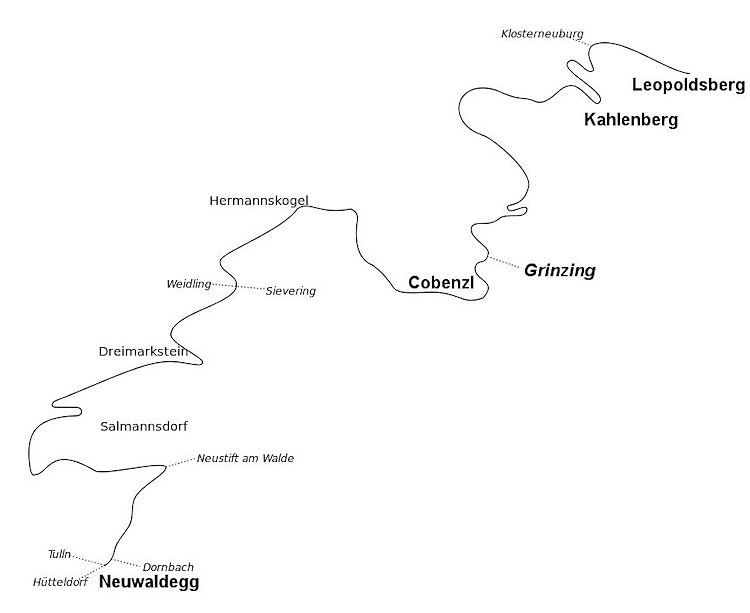
The 1936 race track
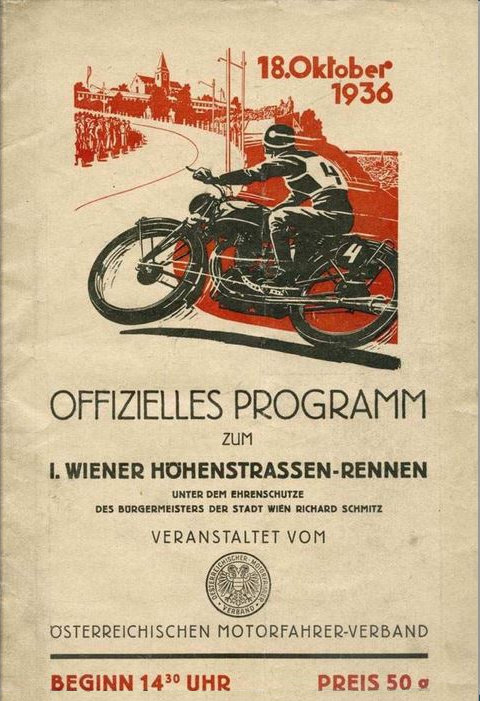
Program booklet of the first race
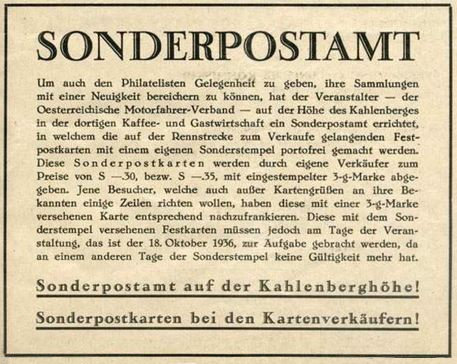
In the program booklet was an announcement that a temporary post office had been established where
a postcard with special cancellation could be obtained
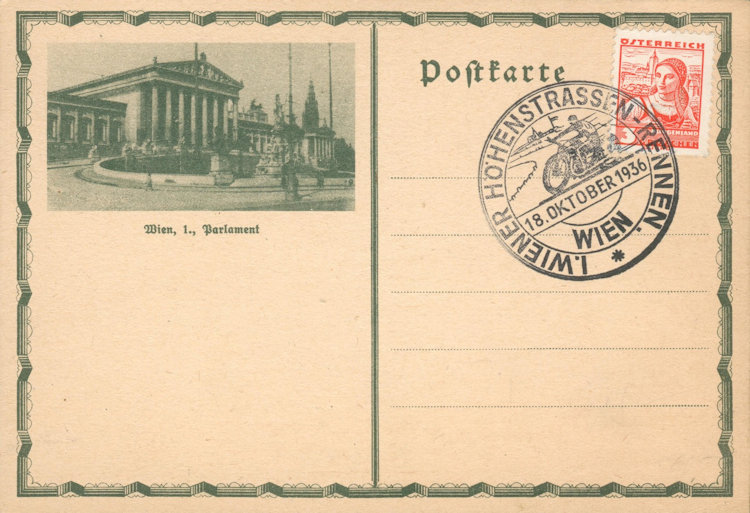
The special cancellation on a card....

and on a letter
The 2nd Vienna Höhenstrasse Race in 1939 had been organized by the NSKK-Gruppe Ostmark (National Socialist Motor Corps, group Eastern march). The track lead from Grinzing to Josefsberg, the race was open for motorbikes and racing cars. Because Austria meanwhile had been “joined” to the German Reich also a lot of German drivers filled the entry lists, amongst which famous names like Hans Stuck (Auto Union) and Manfred von Brauchitsch (Mercedes Benz Silver Arrow) or in the motorcycle classes Ewald Kluge (DKW) or Kellner (BMW).
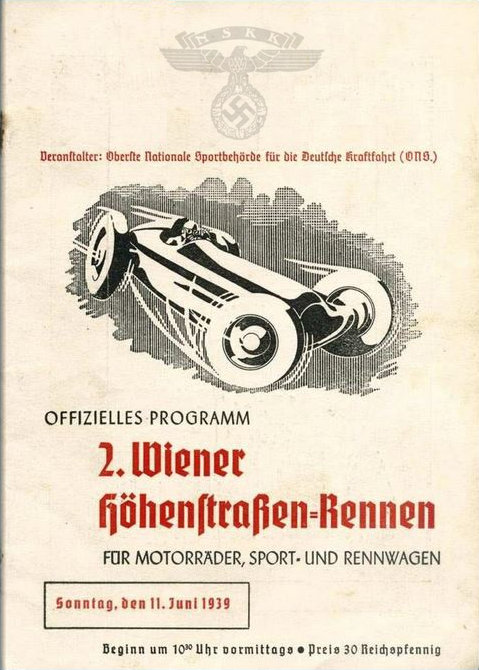
Program booklet of the second race
The race was a challenge in different ways: the road in bigger parts had a surface of cobblestones, which didn't give much grip. On top of that the safety measures for the riders were poor – pylons of stone along the road showing the edge of the road as well as trees or poles of the signposts were totally “uncovered” – no straw-balls, no air-fences, nothing!
In the field of competitors there was a broad panel of different motorbikes of that era, and between the famous riders there have been several guys with more or less tuned “normal bikes” like Puch 250 ccm. The pictures may give an impression of the scene in those times.
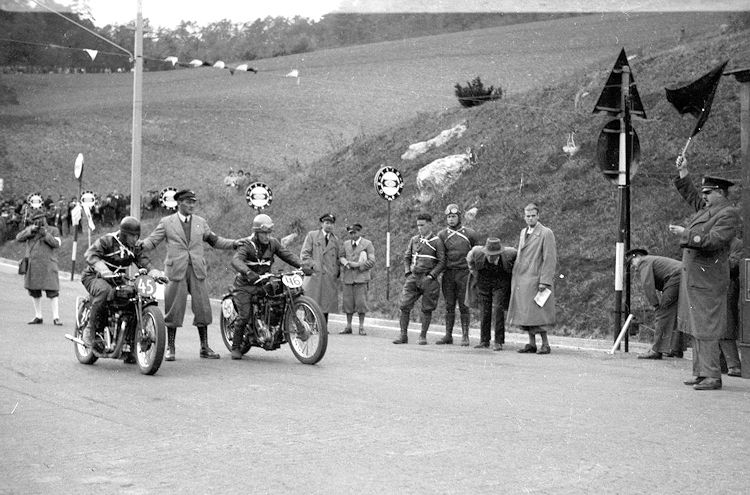
Start of two 350 cc riders - 1936
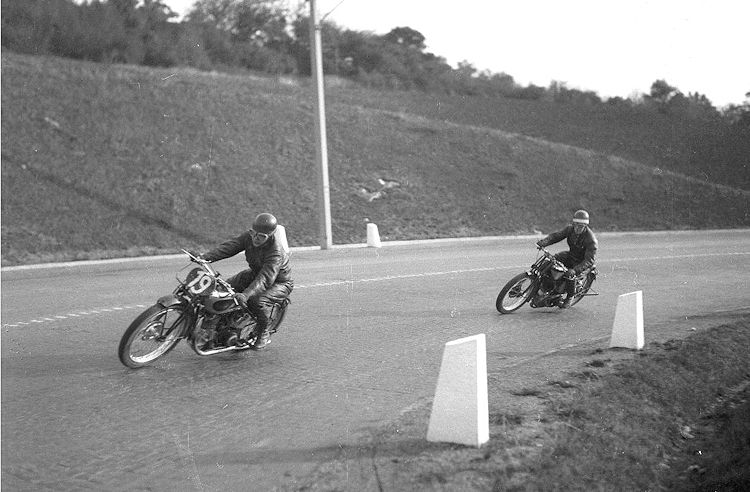
Unprotected racing - 1936

Novotny on the starting line on the (noisy) DKW - 1939
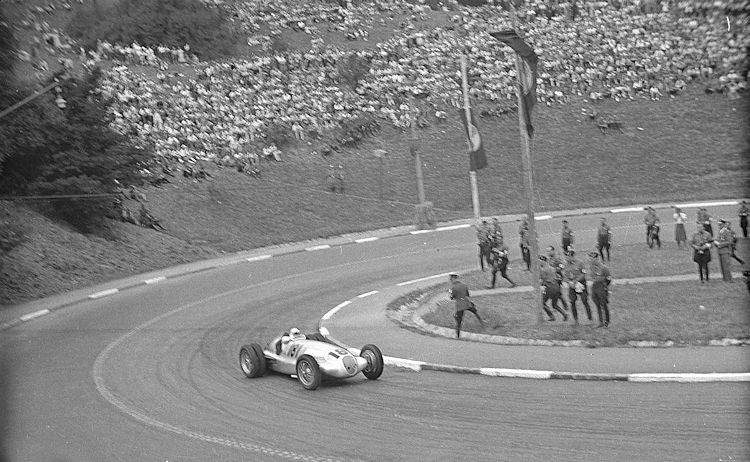
Herman Lang in Mercedes - 1936
Further races have been held from 1955 to 1957. In 1955 there were 3 KTM's participating in the 125 ccm class, of which 1 was riden by Erich Trunkenpolz, son of KTM-founder Johann Trunkenpolz.
After that there has been a break for nearly 50 years. It was in 2003 only, when “Classic Drivers Club Austria e. V.” organized a race again, this time for “historic race motorcycles and race cars”, leading from Klosterneuburg to the Kahlenberg.
Besides that, the Höhenstrasse has been used for running events like the Höhenstrasse-Lauf, which was held for the first time in 1949, and after a period with different breaks continuously from 2008 to 2019.

Until todays the road is a popular place for sportive car drivers and motorbike riders, very often exceeding the regular speed limits and so giving the police a reason to control. Especially on weekends one has to consider an increased presence of police – so speeding is no good idea …
For collectors: Letters and postcards with special cancellations dedicated to the races are still available on different online platforms, as well as posters announcing the races of those times.
Walter Kirchweger
On the website of the Technical Museum Vienna more information can be found, amongst which scans of original program booklets and pictures.
Top - Back to former page - Home |










